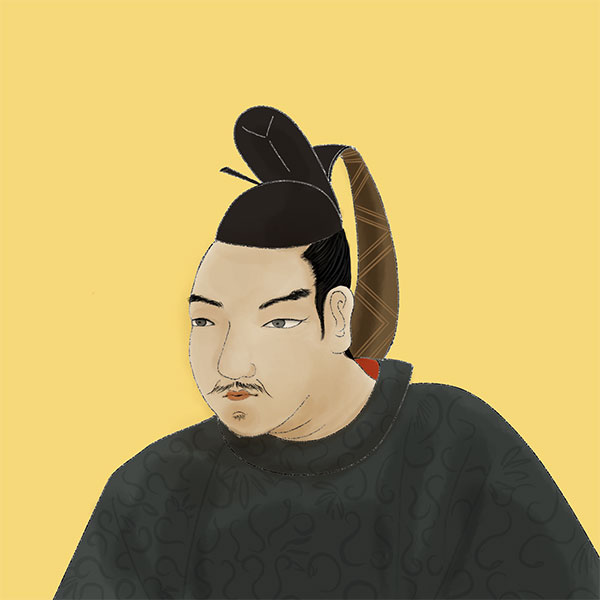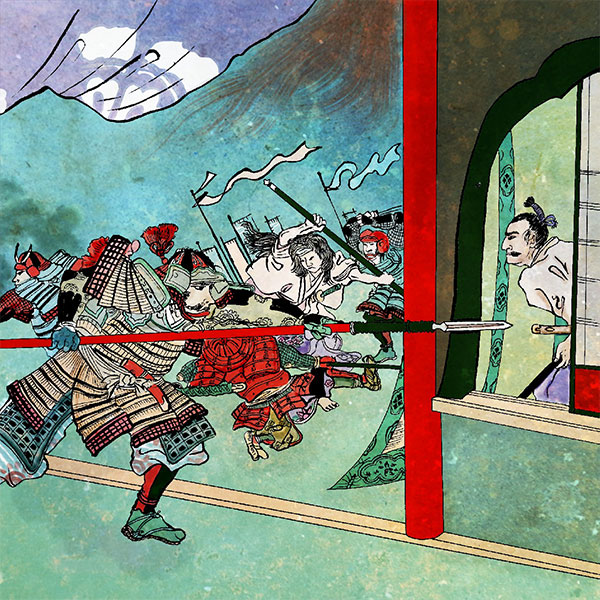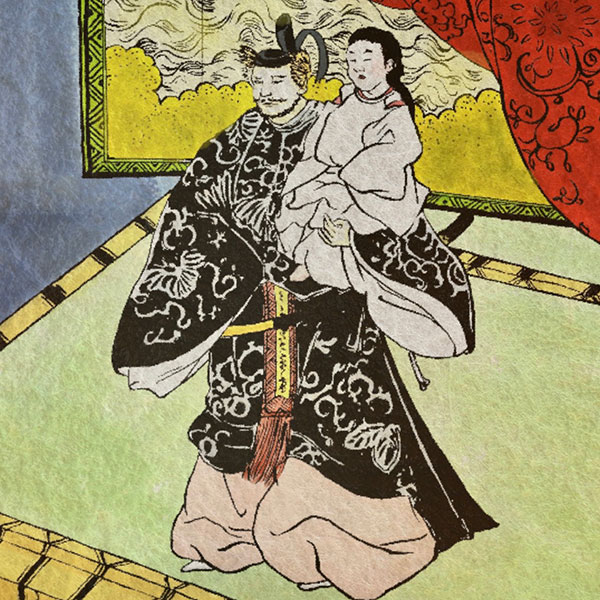Sanboshi (Hidenobu Oda) (1/2)Nobunaga's grandson

Sanboshi (Hidenobu Oda)
- Article category
- biography
- name
- Sanboshi (Oda Hidenobu) (1580-1605)
- place of birth
- Gifu Prefecture
- Related castles, temples and shrines

Gifu Castle

Kiyosu Castle

Azuchi Castle
- related incident
During the Sengoku period, warlords lost their lives in various ways, including through battle, illness, betrayal, and assassination. At that time, Oda Nobunaga, who controlled the Kinai region and was close to unifying the country, was forced to commit seppuku at Honnoji Temple due to a rebellion by Akechi Mitsuhide, which marked a major change in the flow of the times. The same was true of Sanboshi, also known as Oda Nobuhide. Although he was born as Nobunaga's grandson, this time we will introduce the life of this man who was greatly at the mercy of the flow of the next generation.
Born as the grandson of Oda Nobunaga
He was born in 1580 as the eldest son of Oda Nobunaga's son, Oda Nobutada. His childhood name was Sanboshi. There are various theories about his mother, but it is certain that she was Tokujuin. However, it is also said that she was the daughter of Shiokawa Nagamitsu, the daughter of Mori Kanenari, or even Takeda Shingen's daughter, Matsuhime. If his mother was Matsuhime, then he would have been Takeda Shingen's granddaughter.
According to the Mino no Kuni Koseki Kou, there is also a description that she was the daughter of Wada Magodayū, and since the Koyasan Shichiin Temple death register lists her maternal grandmother as being from the Shindo family, it is possible that she was the daughter of the Shindo family.
During the Honnoji Incident in 1582, he was in Gifu Castle, the castle of his father, Nobutada, but was protected by Maeda Gen'i, Hasegawa Yoshitake and others and fled to Kiyosu Castle.
In the same year, Nobunaga's senior vassals gathered at the Kiyosu Conference, where, with the help of Hideyoshi Hashiba (later known as Toyotomi Hideyoshi), he inherited the headship of the Oda Danjo-Tada clan at the age of just three, and was given 200,000 koku of land in Naka-gun, Omi Province as a direct territory. However, as he was still too young to govern, Hidemasa Hori served as the deputy governor.
The decision was made to move to Azuchi Castle, but he was kept in Gifu Castle by his uncle, Oda Nobutaka. This was the beginning of the deterioration of the relationship between Hideyoshi and Nobutaka, leading to conflict. However, after Nobutaka was defeated by Hideyoshi and surrendered, he moved to the temporary residence of Azuchi Castle, which had been refurbished, and was placed under the guardianship of Oda Nobukatsu (the second son of Oda Nobunaga), who became the acting head of the Oda clan.
When Hideyoshi Hashiba and Nobukatsu Oda came into conflict in 1584, Sanboshi was moved from Azuchi Castle to Sakamoto Castle in Omi Province, and then to Hideyoshi in Kyoto. When Hideyoshi and Nobukatsu made peace in November of the same year (the Battle of Komaki and Nagakute), Toyotomi Hideyoshi (Hashiba Hideyoshi) reversed their political positions and officially recognized Nobukatsu as head of the Oda clan, and Sanboshi was moved back to Sakamoto Castle.
Coming of age ceremony and formal succession to the family headship
In 1588, at the age of nine, he entered Gifu and took the name Saburo Hidenobu, where he was given the title of Junior Fourth Rank and appointed as a Chamberlain. The name of Chamberlain Hidenobu Ason is recorded in the "Jurakutei Gyokouki," a record of Emperor Goyozei's visit to Jurakudai in April. Among the daimyo who attended and held the rank of Chamberlain or Shosho, he was fifth in rank, behind Maeda Toshiie, Toyotomi Hidekatsu, and Yuki Hideyasu.
During Toyotomi Hideyoshi's Siege of Odawara in 1590, the entry for Hori Hidemasa in the Kansei Shoshu Shokafu states that Hidenobu participated as part of the sixth squad and fought under the command of Hidemasa, who was the commander of the left side of the army, providing a rifle unit. However, considering that Hidenobu was only about 10 years old at the time, the prevailing theory is that this is probably false.
After the Siege of Odawara, Oda Nobukatsu refused to be transferred to his former territory by Tokugawa Ieyasu, who was transferred to the Kanto region after the Siege of Oda, and was stripped of his title. His eldest son, Oda Hideo, was promoted to daimyo and succeeded him as head of the Oda clan. However, it is thought that when Oda Hidenobu became lord of Gifu Castle in the autumn of 1592, Hidenobu was once again appointed head of the family.
As he was called Gifu Chunagon
In 1592, Hidenobu was not initially scheduled to take part in the Bunroku War (although he had been assigned a camp site), but when Toyotomi Hidekatsu (Gifu Chunagon) of the Gifu Hashiba clan died on September 9 of the same year, Hideyoshi gave Hidenobu his remaining territory of 130,000 koku in Mino Province and Gifu Castle.
The Seshu Gunki records that on this occasion, Hidenobu succeeded Hidekatsu as his adopted son.
As a result of this, the 9th Division, including Nagaoka Tadaoki, Endo Tanemoto, and Endo Yoshitaka, and 8,000 Mino troops led by Hidekatsu, who had died in battle on Jeju Island, were hastily led by Hidenobu's chief retainer, Momo no Tsunaie.
The plan for the attack on Jinju Fortress called for the mobilization of 6,000 Mino troops to work on construction in Busan, but in the actual battle for Jinju Fortress in May, only 4,018 men were mobilized, having crossed the sea (from Jeju Island) and been incorporated into the siege force.
Among the vassals are Tsuda Mototsuna and other former vassals of Nobutaka and Toyotomi Hidekatsu, but there are also other former Saito vassals such as Iinuma Nagazane, who served as the lord of Ikejiri Castle, Saito clan members such as Saito Shoinken and Saito Tokumoto, and Toki clan members such as Muto Sukejuro, suggesting that the Mino people had been reunited as vassals. Gamou Ujisato's eldest illegitimate son, Gamou Mototoki (Ikoma Iemon), and Adachi Shozo, known as a master swordsman, also served Hidenobu.
In December, Hidenobu built Kagamishima Port, issued a license, and guaranteed its status as the final port for cargo ships sailing upstream. According to the Matsuura Kojiki, on March 6, 1593 (2nd year of Bunroku), Hidenobu accompanied Teranishi Masakatsu and others to Nagoya Castle, where Hideyoshi was staying, on the pretext of visiting the camp.
On October 3rd of the same year, he accompanied Hideyoshi to the Imperial Court. At this time, he was already given the surname Hashiba, and is described in historical documents as Gifu Chunagon. From this, it can be inferred that he was promoted and appointed to the rank of Junior Third Rank and Chunagon.
In the New Year of the 3rd year of Bunroku (1594), she entered the Imperial Court as one of the new nobles. In the February entry of the same year in the Komai Diary, there is a passage saying "The wife of the Gifu Chunagon," which suggests that she took a wife at the same time as she was appointed Chunagon. On May 23rd, when the Ming envoy Shen Weijing had an audience with Hideyoshi at Nagoya Castle, Tokugawa Ieyasu, Maeda Toshiie, Hidenobu, Kobayakawa Hideaki, Toyotomi Hideyasu, and Uesugi Kagekatsu were in the same room as him.
It is also said that in the same year, he protected cormorant fishing, following in the footsteps of his grandfather, Nobunaga. Records of the area stating that there were 12 cormorant fishing boats during Hidenobu's time are still available to this day, and the protection of cormorant fishing was continued by subsequent lords of Gifu.
In the first month of the Bunroku era (1595), he accompanied Toyotomi Hidetsugu, who had succeeded him as regent, to the Imperial Palace. On March 8 of the same year, when Hideyoshi visited Hidetsugu at Jurakudai, he led soldiers to guard the journey. It is unclear who he was following at the time, but considering that he was not implicated in the Hidetsugu incident, it is thought that he may have returned to serving Hideyoshi.
Battle of Sekigahara
There are indications that preparations for the Battle of Sekigahara began as early as 1599.
There is a continuation in the article about Sanboshi (Oda Hidenobu)
- related incident

- WriterTomoyo Hazuki(Writer)I have loved history and geography since my student days, and have enjoyed visiting historical sites, temples and shrines, and researching ancient documents. He is especially strong in medieval Japanese history and European history in world history, and has read a wide range of things, including primary sources and historical entertainment novels. There are so many favorite military commanders and castles that I can't name them, but I especially like Hisashi Matsunaga and Mitsuhide Akechi, and when it comes to castles, I like Hikone Castle and Fushimi Castle. Once you start talking about the lives of warlords and the history of castles, there's a side of you that can't stop talking about them.








